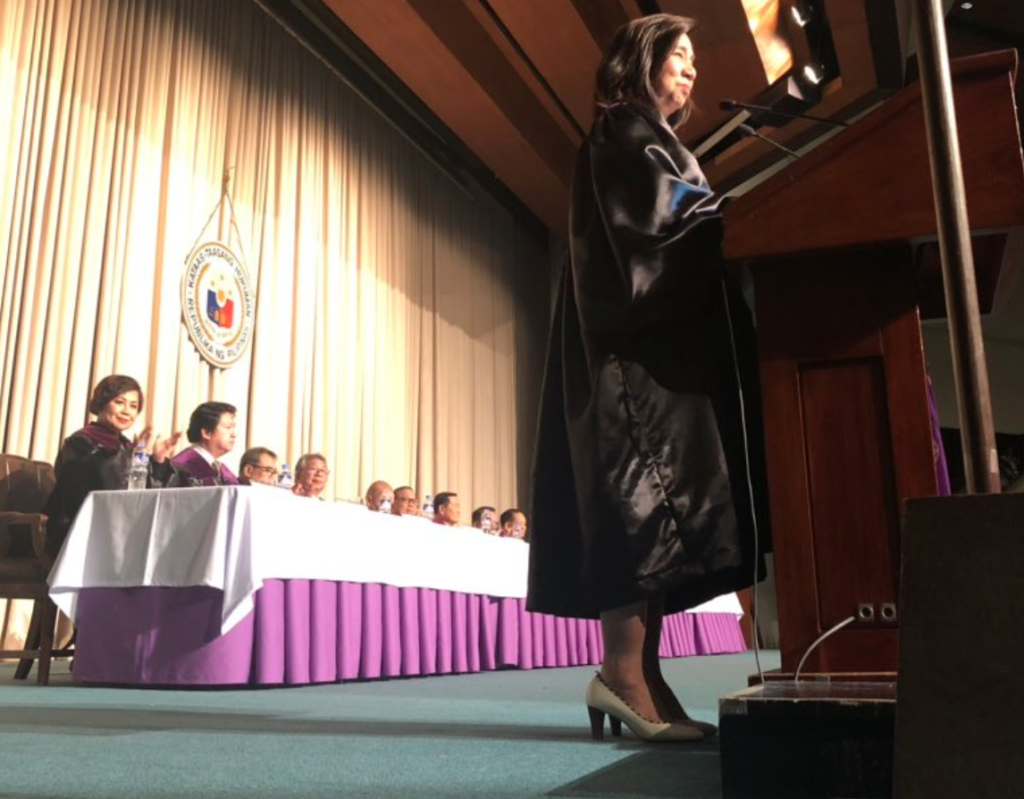Supreme Court Public Information Office (PIO) publishes the official results of the #BAR2019 exam in there social media accounts such as Twitter and Facebook. According to Supreme Court PIO, the results of the 2019 Bar Examinations will be uploaded in the SupremeCourt website on April 29, 2020, after the En Banc session.
Bar2019 Chairperson Senior Associate Justice Estela M. Perlas-Bernabe delivers her message and congratulates the 2019 BAR Exam passers. A total of 2,103 out of 7,685 examinees (27.36%) who completed #BernaBar2019 passed. The actual results will be uploaded soon to the SC website.

2,103 out of 7,685 examinees passed November 2019 BAR Exam Results
FULL LIST: November 2019 Philippine Bar Exam Results Announced (Alphabetical Order)
A-B–C-D-E-F-G–H-I-J-K–L-M-N–O-P-Q-R–S-T-U–V-W-X-Y-Z
#Bar2019 is now trending on social networking sites such as Twitter. Top 10 Passers also available on this webpage.

Chief Justice Peralta issues Administrative Circular No. 36-2020 addressed to all litigants, justices, judges, and court personnel of the judiciary, and members of the Bar on the areas placed under General Community Quarantine from 1 to 15 May 2020.



According to the Netizens, 7, 699 people won’t be able to sleep soundly tonight. I pray and hope that you all will be able to dot the Y’s before your names. Pray extra hard tonight, and never forget to thank the Lord and be grateful.
May the passers of the #Bar2019, be vested with enough conviction, sufficient resolve, and great courage and determination to fight for the truth, to deliver justice, and to preserve the ideals of this great nation. May God bless you all!
I hope many of the takers will be able to say that tomorrow. Pass or not, having the chance and guts to take the exam is a win in itself. Praying for everyone, thy will be done!
I can’t imagine how stressful this is for you guys but I want you to know that whatever the results may be, the Lord knows what’s best for you and he will never leave you.
Exam Coverage
- Political Law – Preliminary provisions and basic concepts, legislative department, executive department, judicial department, constitutional commissions, bill of rights, citizenship, the law on public officers, administrative law, election law, local governments, national economy and patrimony, social justice and human rights, education, science, technology, arts, culture and sports, the family, amendments or revisions of the constitution and public international law.
- Labor Law – General provisions, pre-employment, labor standards, social welfare legislation, labor relations, post-employment, management prerogative and jurisdiction, and reliefs.
- Civil Law – General principles, person & family relations, property, succession, obligations and contracts, sales, lease, partnership, agency, credit transactions, land titles and deeds, and torts and damages.
- Taxation Law – General principles, national taxation, local taxation, and judicial remedies.
- Mercantile Law – Letters of credit and trust receipts, negotiable instruments law, insurance, transportation, corporation law, securities regulation code, banking, intellectual property code, anti-money laundering act, electronic commerce act, data privacy act and financial rehabilitation, insolvency, liquidation and suspension of payments.
- Criminal Law – Revised penal code – book 1 and 2, special laws including anti-arson law, anti-fencing law, anti-graft, and corrupt practices act, the anti-hazing act of 2018, anti-hijacking law, anti-photo and video voyeurism act of 2009, anti-plunder act, bouncing checks law, cyber-crime prevention act of 2012, among others.
- Remedial Law – General principles, jurisdiction, civil procedure, provisional remedies, special civil actions, special proceedings, criminal procedure, evidence, write of “AMPARO”, writ of “HABEAS DATA”, and rules of procedure on environmental cases.
- Legal and Judicial Ethics and Practical Exercises
Examinees were tasked to answer open-ended questions in longhand. Those questions, carefully selected by the committee, are formulated to test analytical ability, facility in expression in terms of written argument, comprehension of basic principles of law, and grasp of jurisprudence.

Check out the Comparative Results for the Bar Examinations in the past 19 years (statistics courtesy of OBC):
| Year | No. of Examinees | No. of Passers | Passing Rate |
|---|---|---|---|
| 2018 | 8,158 | 1,800 | 22.07% |
| 2017 | 6,748 | 1,724 | 25.55% |
| 2016 | 6344 | 3747 | 59.06% |
| 2015 | 6,605 | 1,731 | 26.21% |
| 2014 | 5,984 | 1,126 | 18.82% |
| 2013 | 5,292 | 1,174 | 22.18% |
| 2012 | 5,343 | 949 | 17.76% |
| 2011 | 5,987 | 1,913 | 31.95% |
| 2010 | 4,847 | 982 | 20.26% |
| 2009 | 5,903 | 1,451 | 24.58% |
| 2008 | 6,364 | 1,310 | 20.58% |
| 2007 | 5,626 | 1,289 | 22.91% |
| 2006 | 6,187 | 1,893 | 30.60% |
| 2005 | 5,607 | 1,526 | 27.22% |
| 2004 | 5,249 | 1,659 | 31.61% |
| 2003 | 5,349 | 1,108 | 20.71% |
| 2002 | 4,659 | 917 | 19.68% |
| 2001 | 3,849 | 1,266 | 32.89% |
| 2000 | 4,698 | 979 | 20.84% |
Share your thoughts and comment in the discussion box below.







